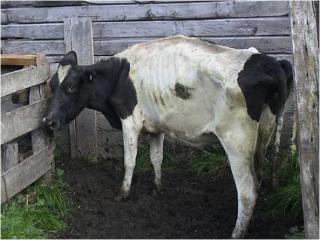New diagnostic test for endemic cattle disease under development
Published on 16 February 2011 in Sustainability and Communities , Climate, water and energy , Ecosystems and biodiversity , Food, health and wellbeing

Introduction
Johne’s disease, or paratuberculosis, is a chronic infectious enteritis caused by Mycobacterium avium subspecies paratuberculosis (Map). The disease is endemic in many parts of the world including the UK and is responsible for significant economic losses due to both reduced productivity and the cost of implementing control. Infected animals shed Map in their faeces and milk and the disease is transmitted primarily to young animals via the ingestion of contaminated food and drink, although it can be also transmitted in utero and Map has been demonstrated in the semen of infected bulls. There is a prolonged incubation period of about 2-4 years after infection before the characteristic clinical signs of emaciation and diarrhoea become evident. During the incubation period the animals are described as being subclinically infected and can intermittently shed Map. Johne’s disease is most often introduced into a herd or flock through the purchase of subclinically infected stock showing no signs of disease. The diagnosis of Johne’s disease is problematic and there is no single diagnostic test that can detect all stages of the disease. Subclinically infected animals are particularly difficult to diagnose and test results may be falsely negative. We need a better understanding of the organism, how it causes the disease and the immune responses of animals to infection with Map in order to develop improved diagnostic tests and new vaccines.
Key Points
Research Undertaken
A diagnostic ELISA test incorporating Map-specific antigens has been developed by Moredun scientists. Studies have shown that the test can detect Map infection in experimentally infected animals just 28 weeks after infection. However, since experimental infection models use artificially high doses of Map, the test is currently being evaluated in a field situation. Using recent novel technologies the group has identified Map proteins that are potentially involved in virulence and pathogenicity and represent suitable vaccine candidates. Gene knock-outs are being constructed to provide Map strains which may be attenuated and could be used for novel marker vaccines. The group has undertaken substantial research on Map strain characterisation and optimised typing procedures using pulsed field gel electrophoresis (link to website) and mycobacterial interspersed repeat unit-variable tandem repeat (MIRU-VNTR). These procedures have been used in epidemiological studies including a study investigating the genetic diversity of UK Map isolates linked to the UK prevalence survey . This study showed that two Map strains predominate in cattle in the UK. Work continues on Map strain differentiation employing new generation sequencing technology in collaboration with the Sanger Research Institute.
Policy Implications
Author
Dr Karen Stevenson Karen.Stevenson@moredun.ac.uk
Topics
Sustainability and Communities , Climate, water and energy , Ecosystems and biodiversity , Food, health and wellbeing





